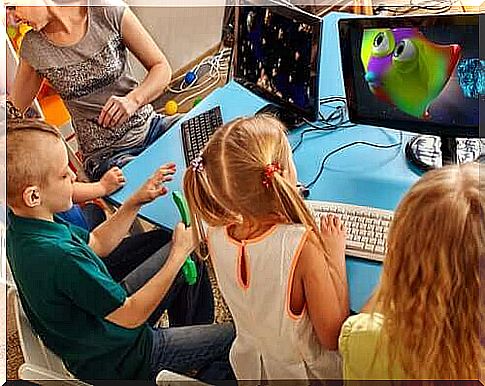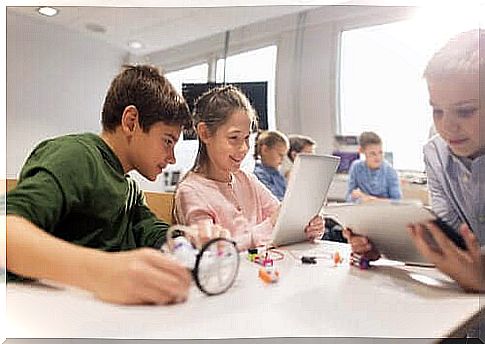3 Ways To Stimulate Creativity With Technology

Creativity is rapidly turning into one of the characteristics that are given greater weight in the 21st century. According to a 2018 report by the World Economic Forum, it would be one of the three skills that employers will require around 2020. Stimulating creativity with technology is something that we can apply in the classroom.
In addition, a survey conducted by IBM revealed that 60% of CEOs now consider creativity as the most important leadership quality. A great tool that we have at our disposal and that we may not always make the most of is technology.
If you want to know how to empower creativity with the help of technology or make your pupils more creative in everyday life, let’s see some ways to do this. In fact, it is possible by simply following some simple guidelines.
Stimulate creativity with technology by finding positive distractions
Professors and teachers often complain that technology can be a distraction. This is a fact. Yes, it could be distracting and not a little. However, when it comes to being creative, research has shown that distractions can be a good thing.

A study by neuroscientists from Harvard University and the University of Toronto found that people with a low propensity to avoid distractions tend to have a rich soup of creative thoughts. Distracting yourself can do you good.
If we want to give life to useful ideas, both these people with low ability to avoid distractions, and those with a higher ability to concentrate, must learn to let themselves be carried away by these distractions, but they must also learn to tune in to the “right” distractions.
We should guide pupils who are distracted by technology in this direction: that they do so with the most suitable distractions. They must choose those distractions that can bring them knowledge or inspiration for the work they will need to perform.
We must remain open to news
Things are not always the same, they can change. This also applies to technology, even if these changes are not normally disturbed here. An important feature of creative people is the ability to be open to new experiences, opportunities and ideas.
If one day a website that our pupils usually use in the classroom changes, it does not appear as always, we can see in that moment how positive this is. Their reaction will likely be to protest and feel uncomfortable, but our job is to teach them that they need to be open to new experiences.

Blend the line between learning and play
A less clear boundary between learning and play positively affects the increase of creativity with technology. Understanding that work and fun don’t necessarily have to exclude each other is, in fact, the secret to a good balance between teaching and real life.
Once pupils have accepted and understood that they can have fun while learning, and when they know they can create brilliant ideas associated with what they are learning during their “inactivity” time, they will be more open to new ways of thinking and creation. of new ideas.
Research shows that the creative process tends to involve an “incubation” period or time alone. During this phase, thoughts can roam freely. In this phase the pupils will have different ideas: some good, others not so good, but to elaborate them they need a space of their own.
That is to say that we must use technology in the classroom in order to stimulate creativity, if possible, in groups and individually. We can achieve all this by sharing spaces and creating places for ourselves. It is very important to find the right balance to be successful.









